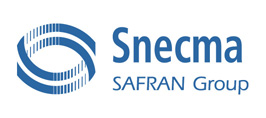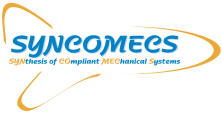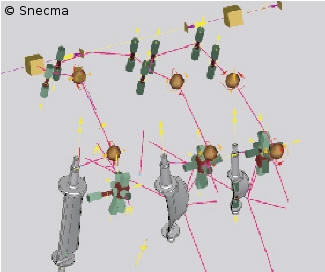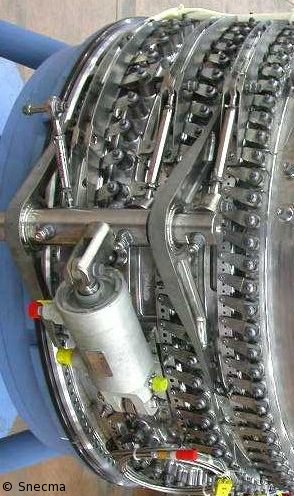

Snecma (FR)
Variable Stator Vane (VSV)
This test case has two objectives:
The first objective of this test case is to find new mechanisms for the VSV system. The main goal of the design is to obtain good orientations of the blades during a mission, using a minimum number of components (or minimising mass) and having good mechanical behaviour.
The second objective deals with the advanced 3D modelling of the VSV. Once the general architecture is chosen, it is important to validate the detailed design using 3D modelling. Indeed, it is important to be able to provide 3D models which take into account all physical aspects (contacts, friction, aerodynamic loads, etc.) We hope that the SYNCOMECS project will improve our calculation process (“Multi stage” modelling, friction on all kinematic elements, contact management, a wider variety of function types to define the transient loads, performance, etc.)
 |
 |
Blade Cooling Process
The objective is to determine the initial shape of turbine blades: Rotor blades have shapes which are functions of the rotation speed (e.g. rest, take off, cruise ) due to loads resulting from: thermal fields, aerodynamic loads and centrifugal effects.
As blades are designed under aerodynamics specifications in cruise flight (such as: compression ratio and yield). The work of the mechanical engineer consists of finding the blade to be manufactured, termed a “cold blade” (while the engine is not running).
This is an inverse finite element problem.
At this time some heuristic iterative methods exist, but they are quite time expensive.
As a consequence, the SYNCOMECS projects aims to develop an inverse finite element tool.

|

|
Examples of Pressure distribution
Website maintained by the University of Cambridge
Last modified, May 2006